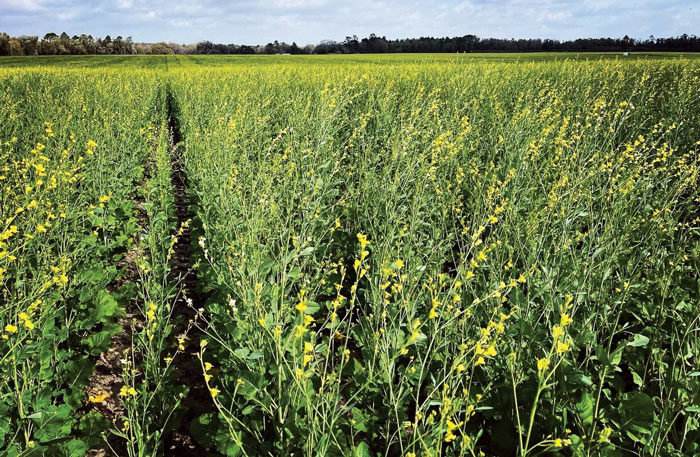No-Till Farmer
Get full access NOW to the most comprehensive, powerful and easy-to-use online resource for no-tillage practices. Just one good idea will pay for your subscription hundreds of times over.

GROWING BUSINESS. Always looking for a new challenge and a new income stream, no-tiller Brooks Garland of Lee, Fla., added caranita, a canola cousin, as a winter crop that also serves as a cover crop. He sells it for use in green jet fuel. Brooks Garland
If sieve was a soil type, it would well describe the farmland acres I manage in North Florida. Despite getting constant and thorough rains, a main goal of reduced tillage and other farming practices we use is to retain moisture.
As you might expect of Florida, our soils are mostly deep sand with a touch of sandy-loam thrown in. That’s a very leaky system. To put it into perspective, we’re 85% irrigated, despite averaging 54 inches of rainfall annually. A hurricane can drop 14 inches of rain and just 4 days later, we’re turning pivots back on because the soils are dried out. We’re always 3 days from drought no matter how much it rains.
Water and inputs are applied frequently and strategically as needed to account for how leachable our soils are. Fertilizer use especially is closely managed to benefit our crops and protect our community and environment. Fertilizer wants to leave the field. We do everything we can to keep it right where it belongs.
Cover crops, soil moisture probes, equipment that places fertilizer right where it’s needed, crop rotation, split applications and more are employed to strategically manage crops in this challenging agronomic environment.
NAME: Brooks Garland
LOCATION: Lee Peanut Farms, Lee, Fla.
ACRES: 11,000
YEARS NO-TILLING: 15
CROPS: Peanuts, cotton, corn, carrots and caranita
PRIMARY SOIL TYPE: Sandy, sandy/loam
ANNUAL PRECIPITATION: 54 inches
Soil type is the main factor of consideration for nearly every farm management practice we employ. Besides allowing water to…